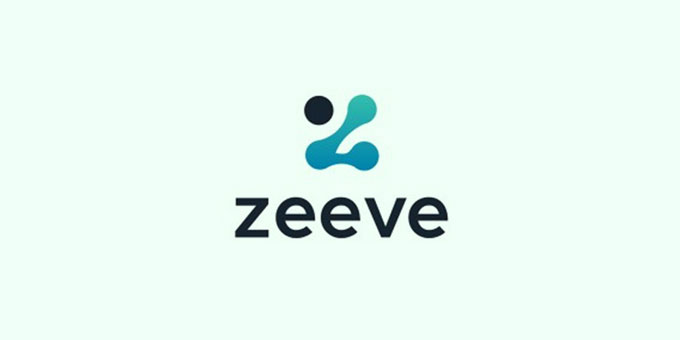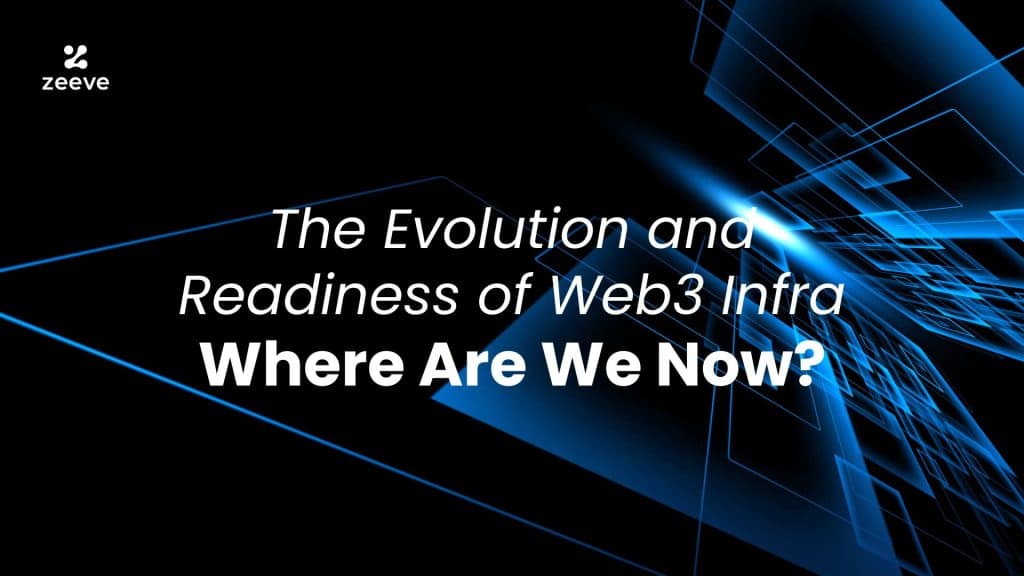Innovations either prevail or perish! The statement is bold and insensitive but a reality, nonetheless. How? We have seen the likes of Nokia and BlackBerry perish to change because they were non-adaptive. However, Web3, despite being readily new, has acknowledged challenges and responded positively with time. As a result, from 2014 onwards, we have seen major industries inclining towards blockchains as their go-to strategy for improving their market share. In China and the United States, more than 300 companies featured on the Fortune 500 list have adopted blockchain.
So, if you think that the Bitcoin ETF’s approval is out of the blue, that is not the case. It has happened due to structural evolution via infrastructural improvements Web 3 has embraced in this brief span of time since its inception. In this piece, we shall see some of the groundbreaking Web 3 Infrastructure readiness and evolution that is making blockchains native to adoption across a vast range of industries.
The Evolution Period: Outsmarting the Learning Curve
Why are more industries ready to adopt the Web 3 way now than previously? The answer: Evolution. In the last 7 years starting 2018 onwards, we have seen some of the major upgrades coming to Web 3 in the form of;
Infrastructure Improvements
In the erstwhile set-up, we have already seen that there was a cookie-cutter approach to deploying blockchains. For example, enterprises had minimal options when it came to improvising on the communication with other blockchains or abstracting features by improving the tech infra that ideally impacts the gas costs, scalability, and UX . To put that into perspective, there was no scope to decouple the execution, consensus and settlement layers and make adjustments so that each can function independently to suit the specific application purpose.
However, as time passed, we witnessed improvements at the infrastructural fronts by the introduction of oracles that helped in fetching data from different blockchains. Along with this, to some extent, the intercommunication with other blockchains have improved massively by the introduction of bridges connecting different blockchains to some extent. Also, there was wallet integration to help improve the experience through account abstraction features that readily improved other aspects of the technology to optimize blockchain for peak level performance.
Language
In the initial stage of the blockchains and smart-contracts, the coding part was the most crucial thing to crack. Why? Because, if you wanted to deploy smart-contracts, everything happened around Solidity. As a result, when you were deploying your application on top of the blockchain in the past, it had to be done from the scratch because RPC endpoint set-ups and others couldn’t be migrated from one language to another. However, the new era of Web 3 is increasingly different. Now you have Web 3 stacks that are using APIs to connect the Web 2 to Web 3. Cross River Bank is already doing the same by allowing banking institutions to use their existing technology stack to connect with the crypto sectors.
Management
Management of blockchains have also seen a massive transformation in the last couple of years. For example, blockchains consist of nodes, blocks, Consensus algorithms and miners responsible for taking the management in hand run operations. However, this process is readily complex and cost intensive. For setting up validators and others, an enterprise has to spend a lot of money initially. But citing the demand and dependency on blockchains increasing with time, now you have managed services that can allow you to set up your blockchains in just a click of a button on a rent based model. All of these evolutions have happened because increasing adoption has helped the technology to mature. Let’s see how the infrastructure readiness has occurred overtime.
Infrastructure Readiness of Web 3: The Journey of Innovation Over Time
Ready To Deploy Stack for Operations
How did rubber tires replace the stone wheels so fast? They were standardized and ready for deployment without any omissions and commissions required at larger proportions. Likewise, the same is true for present-day Web 3. If you have to do everything from scratch, it would take centuries to truly hit mass adoption. However, those drawbacks fade when you have technologies which have matured overtime. Technologies that provide you with an already ready to deploy validators, governance, token and liquidity at your own will without having to change a single line of code. So, in the past, if your existing system was built on C++, Go, Java, or Python, it was impossible to set-up RPCs and query transcations.
However, appchains and rollups SDKs with the likes of Polygon CDK completely revolutionized this possibility. Now, you need not have to experience walled gardens when using blockchains like in the past. On the contrary, using SDKs like Polygon, you can bypass the struggle of adhering to a standardized proving system to setup your blockchain. Rather, the Polygon SDK stack allows enterprises to set up a value chain with Polygon as an existing chain or a new chain based on their will and that too without having to spend months on the development, instead the libraries are robust enough to allow drag and deploy deployment, which is comprehensive but quite different from what we have seen on Ethereum.
For example, there’s the possibility of using a different chain as a settlement layer other than Ethereum. With that, Dapps have full control on governance, validators, tokens and liquidity using the robustness and readiness of ready to deploy stacks like Polygon CDK, ZySync, Cosmos SDK, or Arbitrum Orbit chains.
Highly Scalable Chains
You can measure the readiness of a technology when it can accommodate the changing needs of the sector. In this regard, some of the rollup environments provided an added advantage over Ethereum, but they couldn’t match peak hyper scalability. For example, during a very high network clogging event, one some of the layer 2’s, we have seen fees touching $5 to $8 for every transaction. The erstwhile Web 3 environment had very little room for improving the block space because in doing so, there’s a greater chance for diluting the decentralization.
But in the present context, we have seen stark improvements through parallel processing on StarkNet that introduces multi-tasking for rollups. So, in this model, transactions can be easily categorized in a specific order and opted for execution.
As you can see in the above image, someone seeking a Fanta to quench the thirst has to go with the pepsi guys in a queue, which is not needed in the first place for them. But when parallel processing comes, it breaks the process through a state-access parallelization model where the network would group the transaction and the RPC will feed the consensus system with a specific group of transcations representing different categorization; allowing faster finality. This could ideally improvise on chains like Polkadot, which are introducing . Hence, it simply stimulates the processing / TPS and significantly impacts the gas cost and too an extent, the scalability has put the present day Web 3 in line with Visa/mastercard to support a near equivalent financial ecosystem like CeDeFi, where Dapps can work with the traditional financial system like Visa/Mastercard to bring fiat onramps/offramps to Web3, which were impossible when we look into the past because blockchains could meet the speed as given in the image below.
Maturity of Technology In ZKP, OP, and FHE
There cannot be an independent ecosystem as a standalone solution and we can expect to have 10% GDP moving to blockchains. For industries and enterprises to readily accept Web 3, it should be safe, private, secure and easily interoperable. In the past period of generation 1 blockchains, it was very difficult to secure interoperability, privacy, scalability and decentralization, because the technology stack was not ready for this leap. Fast forward to 2022 and beyond, we have seen massive level upgrades to roll-up stacks like Optimism, where through the use of the ZK-Technology, it has been possible to safeguard one’s data. On top of this, rollups like Optimism have provided a standardized way of modules or libraries of code to build a single environment for all the rollups to operate and excel.
In this way, in the past ideally blockchains were like massive walled gardens/islands of their own. However, through upgrades in the tech, now a superchain thesis of independent yet easily communicable blockchains is possible. FHE and ZK readiness have further upped the ante because privacy was a grave concern for roll ups that were using the Zk-Tech. But introduction of FHE concepts in roll ups brought forward through Fhenix, a layer2 network, has made privacy, security, scalability and decentralization to all occur at once when optimistic rollups, ZKPs and FHE Rollups collectively work to not only improve scalability but without compromising the privacy.
Eliminating the Gas for Good
Initially, when we speak of Bitcoin and the Ethereum Network, the nightmarish experience to behold was paying very high gas fees. In some situations, it could even surpass $10 to $100 or so. Why? Because, all the transaction data was stored as a call-data forever on the blockchains. However, ideally the need to keep the transaction is as good as may be till the time the fraud proofs are not challenged.
But in the absence of technology maturity, these transactions simply lived on the blockchains forever. However, the present maturity through EIP- 4844 introduces the concept of Blob-Data instead of call-data. So, multiple transactions can be kept as blobs for a specific time period and rolled as one single transaction after the challenger period ends and the blob space deletes that data to make space for new data to be injected as blobs.
Now, when this technology fuses with relayer function where a blockchain can reprogram the smart-contract through Account Abstraction (AA) to either eliminate the gas or pay gas share on a shared basis, it significantly makes chains either very low on gas or even gas free.
Simplifying Usage Through Superior UX
Using blockchains in 2016 Vs. 2024? What’s the difference, if you may ask? In 2016, the EOAs were not abstract. Now, EOAs can be abstracted as per the need. So, when you are speaking of improving the user-experience in 2016 to 2020, it was not possible because smart-contracts didn’t evolve to that level. But at present, you can abstract almost everything by eliminating the need to login every single time through wallets or setting up session keys for interaction with the blockchains.
In addition to this, you can also get away with the task of remembering those complex phrases and include programmability to abstract everything that is necessary. So, you can now define smart-contract programmability wallets that allow quick access through even social accounts or they can also aid in account recovery through the use of social media profiles and include any native token for use in gas payments.
Standardized Deployments of Customized Chains
While developing an application on top of the blockchain, the approach that enterprises seek is short and time-boxed. Still, the experience that enterprises get is lengthy, breaking the bank in the process. However, that narrative is changing when R-a-a-S solutions come into play. Now, one can launch their own rollups or an app chain with just a click of a button. R-a-a-S service providers have ended up as game changers where they have expedited the development time and pruned the development cost. How? Through providing a growing rollup infrastructure to launch applications, be it Web 3 games, deFi protocols, or others, with just a simple integration experience.
Now, enterprising entrepreneurs aspiring to launch on top of the blockchain need not have to think of everything from scratch, such as the consensus, execution, and settlement layer. Rather, they have the discretion to launch on DevNet to try different configurations; if things are good, they can move to testnet and, finally, the full-fledged mainnet. They can choose on/off-chain data availability, centralized/decentralized sequencers, and other crucial integrations, with 24/7 monitoring through a single dashboard, analytics, and alerts. R-a-a-S service providers like Zeeve have provided that advantage where enterprises can launch on their preferred tech stack like Optimism’s OP Stack, Arbitrum Orbit, Polygon CDK, or zkSync ZK Stack with just a click of a button and see their blockchain going live very fast.
More Powerful & Augmented Platforms
Some 7 to 8 years from now, Ethereum will be the single source of truth. You have to rely on it for execution, consensus, and settlement. Hence, if a single transaction finality was costing $100, it was no surprise at all. However, in the past seven years, adoption has skyrocketed, exposing numerous points of failure that need undivided attention. Data storage was the most important proposition to acknowledge. In this regard, powerful and augmented platforms like ALT DAs have become an amenable refuge. Why? Imagine competing for a block space to store your heavy transaction data amounting to 50 to 100 KB versus a proof size of compressed recursive data of thousands of transactions stored off-chain in a 10 KB or lesser proof size. If you ask if this was possible three years ago, it was not. Is it possible now? Of Course, allegiance to the ALT DA layers like Near, Celestia, Avail, and Eigen DA makes this possible. Now, you can save a lot of costs, as evidenced by the image below;
So, if you are witnessing a massive level where 28% of the enterprises are leapfrogging into blockchain adoption and another 42% of them have been making up their minds, it is not because they are fomo-ing but because they have ideally identified and acknowledged the benefits that it can bring. That’s where the journey has come from being a technology meant for the nerds to a technology that is revolutionizing the future and changing the business landscape for better outcomes. That has been the evolution and the readiness of Web 3 to change the business dynamics of the future.
Build Your Web 3 Infra with Zeeve
Zeeve is your go-to for all things blockchain infrastructure. We’re here to simplify your life with our Rollups and Appchains-as-a-Service, plus a robust lineup of dedicated node infrastructure and more. Our user-friendly, no-code tools let anyone whip up custom OP (using OP Stack and Arbitrum Orbit) and ZK rollup chains (like zkSync ZK Stack, Polygon CDK), as well as tailored chains based on Cosmos & Substrate, Avalanche L1s (Formerly known as Subnets), and Hyperledger Besu—all decked out with handy third-party integrations and middleware.
Ready to experiment? Our Sandbox tool lets you launch instant DevNet environments for all the leading rollup stacks, allowing you to test drive various configurations before moving to a public testnet or mainnet. For parachain enthusiasts, our Perfuse tool automates the launch of parachain DevNets, streamlining your development process.
Plus, we have dozens of integrations available for every rollup and appchain, including, alternative Data Availability layers like Celestia and Avail, account abstraction SDKs from Biconomy and Halliday, and reliable decentralized oracles such as RedStone and Pyth.Check out our integration partner page to see the full menu.
Got questions? Just hit us up. Our experts are here to help you figure out the best setup for your needs






















